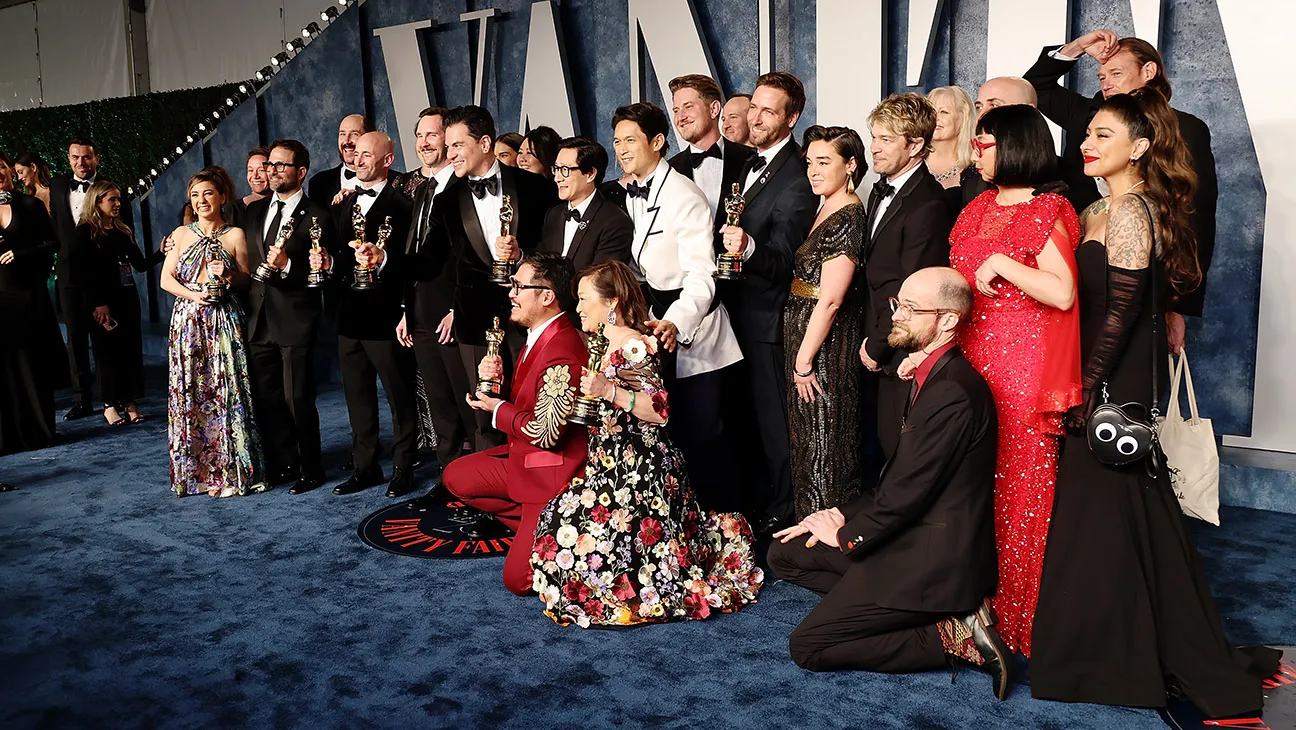The First Word of Every Oscar Category: A Comprehensive Guide in 2024
Introduction to Oscar Categories
The Academy Awards, popularly known as the Oscars, are the pinnacle of achievement in the film industry. Each year, the Academy of Motion Picture Arts and Sciences presents awards across various categories, honoring the finest talents and contributions to cinema. These categories are more than mere labels; they are the very essence of what the Oscars celebrate. By focusing on the first word of every Oscar category, we gain a unique perspective on what each award represents and how it underscores the artistry and technical skill involved in filmmaking. This article explores the significance of these first words, providing an in-depth look at what each category truly signifies.
The Significance of Oscar Categories
Oscar categories are meticulously designed to highlight different aspects of filmmaking. Each category reflects a specific facet of the film production process, from acting and directing to technical achievements like cinematography and sound. The structure of these categories serves as a framework for evaluating and celebrating the diverse talents that contribute to a film’s success. Understanding these categories’ first words offers valuable insights into their purpose and the particular aspect of filmmaking they aim to honor. It sheds light on how the Academy values and recognizes excellence in various domains, creating a comprehensive picture of what it takes to produce a successful film.
Why Understanding the First Words Matters
Why should we pay attention to the first words of Oscar categories? These initial terms often encapsulate the core focus of each award. They serve as a shorthand for the essence of what the award represents. For example, the word “Best” immediately communicates that the category is about identifying the highest level of quality in a particular area. This simple but powerful word sets a high standard and underscores the competitive nature of the Oscars. By dissecting these first words, we can better understand the Academy’s criteria for excellence and appreciate the awards’ structure more deeply.
The First Words: An Overview
Let’s dive into the first words of each Oscar category, exploring what they signify and how they frame the awards.
Best Picture
The term “Best” in “Best Picture” signifies the pursuit of the highest possible quality. This category is arguably the most prestigious, as it recognizes the film that excels in every aspect of filmmaking. From storytelling and direction to acting and technical execution, “Best Picture” represents the pinnacle of cinematic achievement. This award is not just about one aspect of a film but rather about how all elements come together to create an exceptional movie experience.
Best Director
“Best Director” highlights the role of the film’s director, who is often considered the visionary behind a movie. The word “Best” in this category emphasizes that the award is meant for the director who has demonstrated outstanding skill and creativity in guiding the film’s production. A director’s ability to interpret a script, coordinate performances, and shape the film’s visual and emotional tone is central to the film’s success. This award honors the individual who has had the most significant impact on the film’s overall direction.
Best Actor
The “Best Actor” category focuses on individual performance, with “Best” indicating the award is for the most outstanding male performance in a leading role. The term “Actor” here underscores that the award recognizes the actor’s ability to bring a character to life, delivering a performance that is both compelling and memorable. This category celebrates the depth of talent and the emotional range that an actor brings to a film, making it a critical component of the awards.
Best Actress
Similar to “Best Actor,” the “Best Actress” category honors the top female performance in a leading role. The term “Best” highlights the search for excellence in acting, while “Actress” specifies that the award is for female performances. This category acknowledges the exceptional talent and emotional depth that an actress brings to her role, celebrating her ability to convey complex emotions and make a significant impact on the film.
Best Supporting Actor
In “Best Supporting Actor,” the term “Supporting” signifies that the award is for male performances that complement the lead roles. While these performances may not be in the spotlight as much as those in leading roles, they are crucial to the film’s success. The “Best” aspect of this category emphasizes that the award is for the most outstanding supporting role, recognizing actors who enhance the main story through their nuanced and impactful performances.
Best Supporting Actress
“Best Supporting Actress” follows the same principle as “Best Supporting Actor,” focusing on the most outstanding female performance in a supporting role. The term “Supporting” highlights the importance of these roles in complementing and enhancing the lead performances. By celebrating the “Best” supporting actress, this award acknowledges the significant contribution of female actors who play pivotal roles in the narrative, even if they are not the central focus of the film.
Best Original Screenplay
The “Best Original Screenplay” category is dedicated to recognizing unique and original stories crafted by screenwriters. The term “Original” is crucial here as it distinguishes this category from those recognizing adaptations. It celebrates screenplays that are not based on existing material but are the result of the writer’s creativity and imagination. This award honors the craft of creating an entirely new story and delivering it in a compelling and original way.
Best Adapted Screenplay
In contrast to “Best Original Screenplay,” “Best Adapted Screenplay” focuses on screenplays adapted from other sources, such as novels, plays, or other media. The word “Adapted” indicates that the screenplay is based on pre-existing material, and the award recognizes excellence in transforming that material into a screenplay. This category honors the skill involved in reimagining and translating source material into a format suitable for film.
Best Animated Feature
“Best Animated Feature” includes the word “Animated,” clearly signaling that the category is dedicated to films created through animation techniques rather than live-action. This award celebrates the creativity and technical expertise required to produce an animated film, recognizing excellence in storytelling, character design, and animation artistry.
Best Documentary Feature
The term “Documentary” in “Best Documentary Feature” focuses on films that document real-life events, people, or issues. This category honors the craft of creating films that inform, educate, and offer insights into real-world subjects. The award highlights the importance of factual storytelling and the impact of documentaries in shaping public awareness and understanding.
Best International Feature
“Best International Feature” emphasizes the global scope of cinema, with “International” referring to films made outside the United States. This category celebrates the diversity of global filmmaking and recognizes excellence in films that contribute to the international cinematic landscape. It highlights the richness of storytelling from different cultures and regions.
Best Cinematography
The term “Cinematography” in this category focuses on the visual aspects of filmmaking. “Best Cinematography” honors the artistry involved in capturing images on film, including the use of lighting, camera angles, and shot composition. This award recognizes the crucial role of cinematography in enhancing the film’s visual storytelling and overall aesthetic.
Best Film Editing
“Best Film Editing” highlights the importance of editing in the filmmaking process. The term “Editing” underscores the craft of assembling a film’s footage into a coherent and compelling narrative. This category honors the skill required to shape a film’s final version, ensuring that the story flows smoothly and effectively.
Best Production Design
“Best Production Design” focuses on the creation of the film’s visual environment, including sets, props, and overall design. The term “Production” reflects the category’s emphasis on the art of designing the physical spaces and elements that contribute to the film’s look and feel. This award recognizes the detailed work involved in building a convincing and immersive world for the story.
Best Costume Design
In “Best Costume Design,” the term “Costume” refers to the design and creation of clothing that characters wear in a film. This category celebrates the artistry involved in designing costumes that enhance character development and contribute to the film’s visual style. The award recognizes the importance of costume design in creating memorable and distinctive looks for characters.
Best Makeup and Hairstyling
The term “Makeup” in “Best Makeup and Hairstyling” signifies the category’s focus on altering actors’ appearances through makeup and hairstyling. This award honors the skill required to create transformative looks that support the film’s characters and story. The combination of makeup and hairstyling plays a crucial role in enhancing character authenticity and visual impact.
Best Visual Effects
“Best Visual Effects” covers the technical achievements in creating visual elements that enhance a film’s storytelling. The term “Visual” highlights the focus on effects that contribute to the film’s overall look, including CGI, special effects, and other visual enhancements. This award recognizes the creativity and technical prowess involved in producing stunning visual effects.
Best Sound
The “Best Sound” category encompasses all aspects of a film’s audio experience, including sound mixing, editing, and design. The term “Sound” reflects the importance of audio in shaping the film’s atmosphere and enhancing the storytelling. This award honors the excellence in crafting a compelling and immersive auditory experience.
Historical Evolution of Oscar Categories
Oscar categories have undergone significant changes since the first Academy Awards in 1929. Initially, the Oscars focused primarily on acting and directing, but over the decades, the range of categories expanded to include technical and artistic achievements in various aspects of filmmaking. This evolution reflects changes in the film industry and the increasing complexity of film production. The introduction of new categories, such as Best Animated Feature and Best Visual Effects, demonstrates the Academy’s recognition of emerging trends and technologies in filmmaking.
Fun Facts About Oscar Categories
The Oscars are not just about the awards themselves but also about the fascinating history and trivia surrounding them. For instance, the Best Picture category was originally known as “Outstanding Picture,” and the term “Best Supporting Actor” was first introduced in 1936. Additionally, the Best Animated Feature category was only added in 2002, reflecting the growing importance of animation in the film industry. These fun facts provide a glimpse into the Oscars’ history and how the awards have evolved over time.
Conclusion
Examining the first word of every Oscar category offers a unique perspective on the awards and what they represent. From “Best” to “Animated,” these terms encapsulate the core focus of each award, providing insights into the Academy’s criteria for excellence. Understanding these first words helps demystify the Oscars and deepens our appreciation for the diverse talents and contributions recognized by the Academy. By exploring the significance of these terms, we gain a richer understanding of what it takes to achieve excellence in the world of cinema.
FAQs
- What is the purpose of the “Best Picture” category?
- The “Best Picture” category aims to recognize the film that demonstrates the highest level of overall excellence in filmmaking, encompassing all aspects of the film’s creation.
- How does the “Best Director” award differ from the “Best Picture” award?
- The “Best Director” award focuses on the director’s individual contribution to the film, while the “Best Picture” award honors the film as a whole, recognizing all elements of the filmmaking process.
- What does “Best Original Screenplay” signify?
- “Best Original Screenplay” is awarded to films with screenplays that are not based on existing material, celebrating creativity and originality in storytelling.
- When was the “Best Animated Feature” category introduced?
- The “Best Animated Feature” category was introduced in 2002 to recognize excellence in animated films, reflecting the growing importance of animation in the film industry.
- Why is the “Best Sound” category important?
- The “Best Sound” category honors the technical achievements in audio, including sound mixing, editing, and design, which play a crucial role in enhancing the overall cinematic experience.


